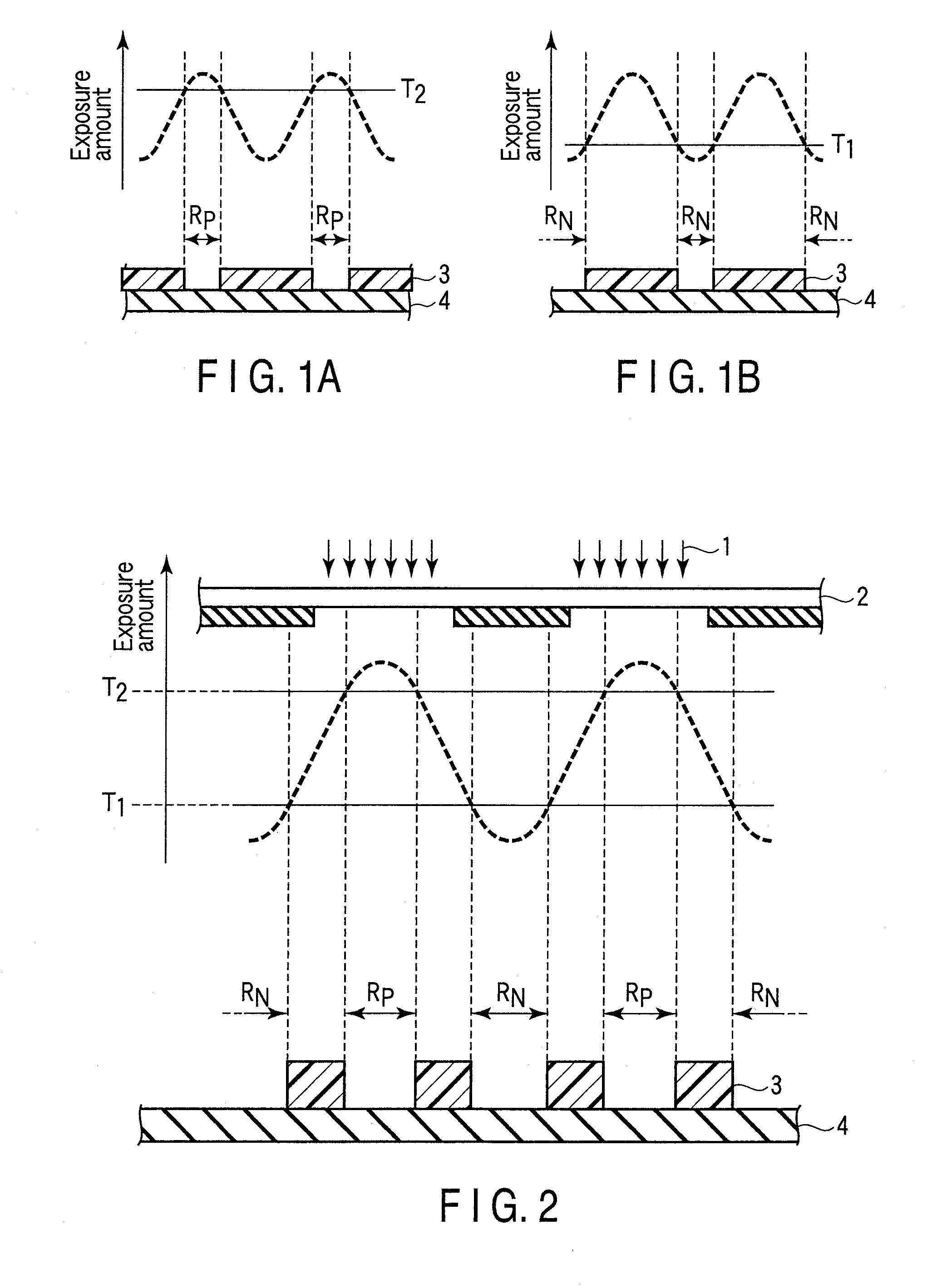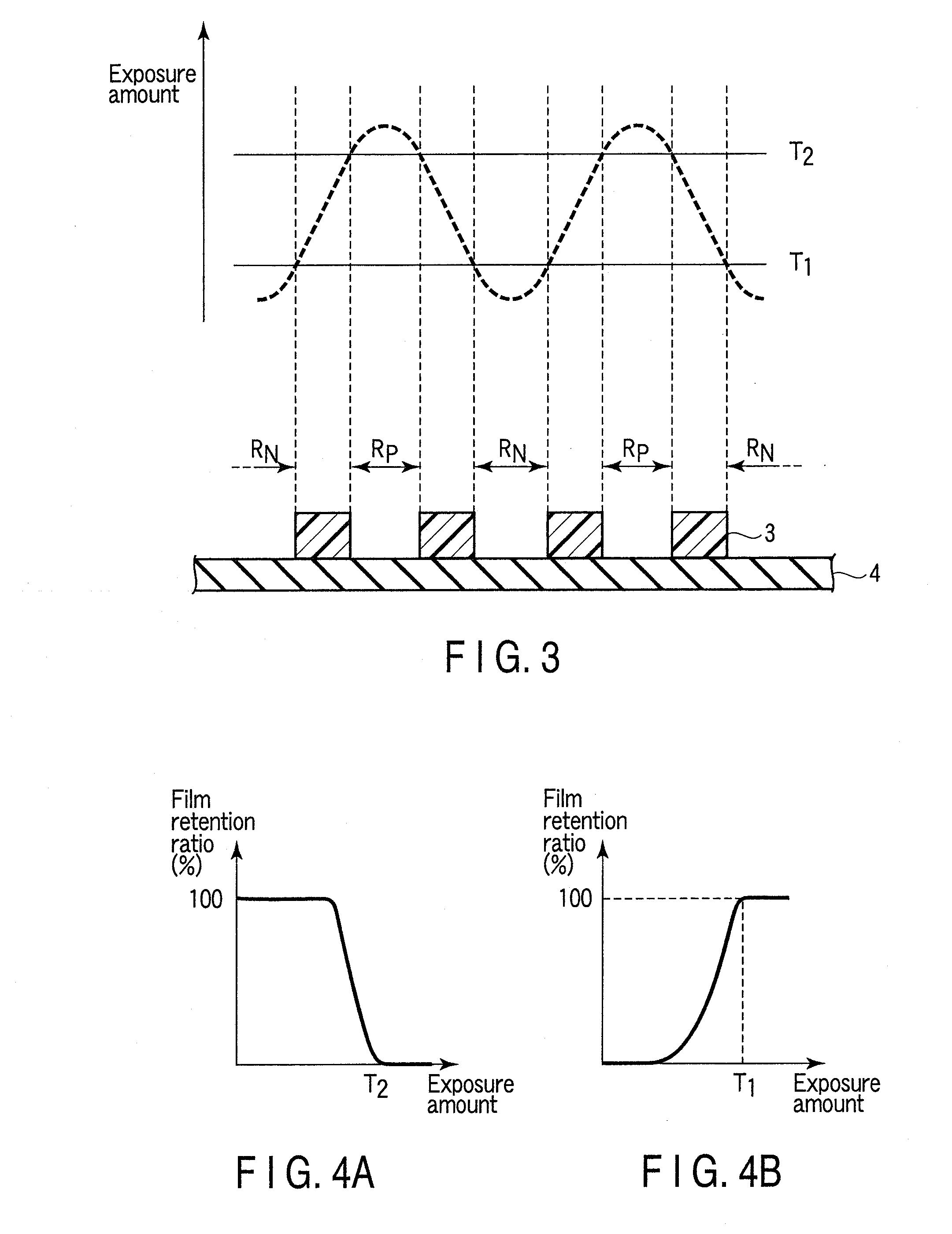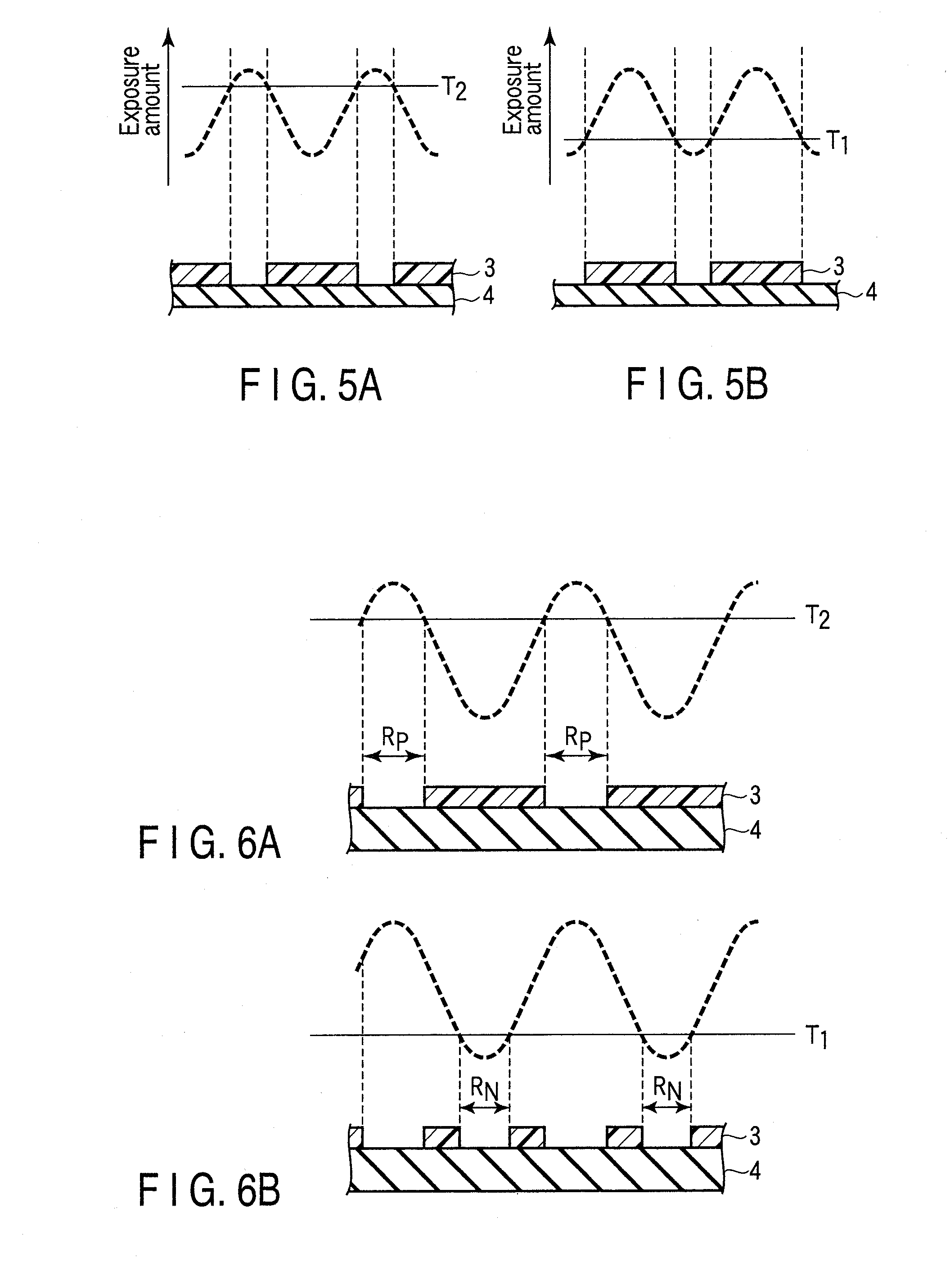Method of forming pattern using actinic-ray or radiation-sensitive resin composition, and pattern
a technology of resin composition and forming pattern, which is applied in the direction of photomechanical treatment originals, instruments, photomechanical equipment, etc., can solve the problems of reducing optical contrast, difficult to find an appropriate combination, and inability to obtain satisfactory exposure margin and focal depth
- Summary
- Abstract
- Description
- Claims
- Application Information
AI Technical Summary
Benefits of technology
Problems solved by technology
Method used
Image
Examples
synthetic example 1
Synthesis of Resin (P-1)
[0456]In a nitrogen stream, 40 g of a solvent consisting of a 6 / 4 (mass ratio) mixture of propylene glycol monomethyl ether acetate and propylene glycol monomethyl ether was placed in a three-necked flask and heated at 80° C. (solvent 1). The monomers corresponding to the following repeating units mixed in a molar ratio of 20 / 20 / 10 / 20 / 30 were dissolved in a solvent consisting of a 6 / 4 (mass ratio) mixture of propylene glycol monomethyl ether acetate and propylene glycol monomethyl ether, thereby obtaining a 22 mass % monomer solution (400 g). Polymerization initiator V-601 (produced by Wako Pure Chemical Industries, Ltd.) was added thereto in an amount of 8 mol % based on the monomers and dissolved. The thus obtained solution was dropped into the solution 1 over a period of 6 hours. After the completion of the dropping, reaction was continued at 80° C. for 2 hours. The reaction liquid was allowed to stand still to cool and was dropped into a mixture consistin...
synthetic example 2
Synthesis of Triphenylsulfonium Acetate
[0459]In a flask, 5.07 g (13 mmol) of triphenylsulfonium iodide, 2.25 g (13.5 mmol) of silver acetate, 120 ml of acetonitrile and 60 ml of water were mixed together and agitated at room temperature for one hour. The reaction solution was filtered, thereby obtaining a solution of triphenylsulfonium acetate.
synthetic example 3
Synthesis of Compound PAG-1
[0460]In a nitrogen stream, 28.0 g (88.55 mmol) of 1,1,2,2,3,3-hexafluoropropane-1,3-disulfonyl difluoride, 17.92 g (177.1 mmol) of triethylamine and 210 ml of diisopropyl ether were cooled with ice. A solution consisting of a mixture of 7.56 g (88.2 mmol) of piperidine and 105 ml of diisopropyl ether was dropped thereinto over a period of 30 minutes. The mixture was agitated while cooling with ice for one hour and further agitated at room temperature for one hour. The resultant organic phase was sequentially washed with water, a saturated aqueous ammonium chloride solution and water, and dried over sodium sulfate. The solvent was evaporated off, and 140 ml of ethanol and 1400 mg of sodium hydroxide were added to the dried matter and agitated at room temperature for two hours. Dilute hydrochloric acid was added so as to neutralize the reaction solution, thereby obtaining an ethanol solution of sulfonic acid.
[0461]The solution of triphenylsulfonium acetate ...
PUM
| Property | Measurement | Unit |
|---|---|---|
| Percent by mass | aaaaa | aaaaa |
| Temperature | aaaaa | aaaaa |
| Temperature | aaaaa | aaaaa |
Abstract
Description
Claims
Application Information
 Login to View More
Login to View More - R&D
- Intellectual Property
- Life Sciences
- Materials
- Tech Scout
- Unparalleled Data Quality
- Higher Quality Content
- 60% Fewer Hallucinations
Browse by: Latest US Patents, China's latest patents, Technical Efficacy Thesaurus, Application Domain, Technology Topic, Popular Technical Reports.
© 2025 PatSnap. All rights reserved.Legal|Privacy policy|Modern Slavery Act Transparency Statement|Sitemap|About US| Contact US: help@patsnap.com



